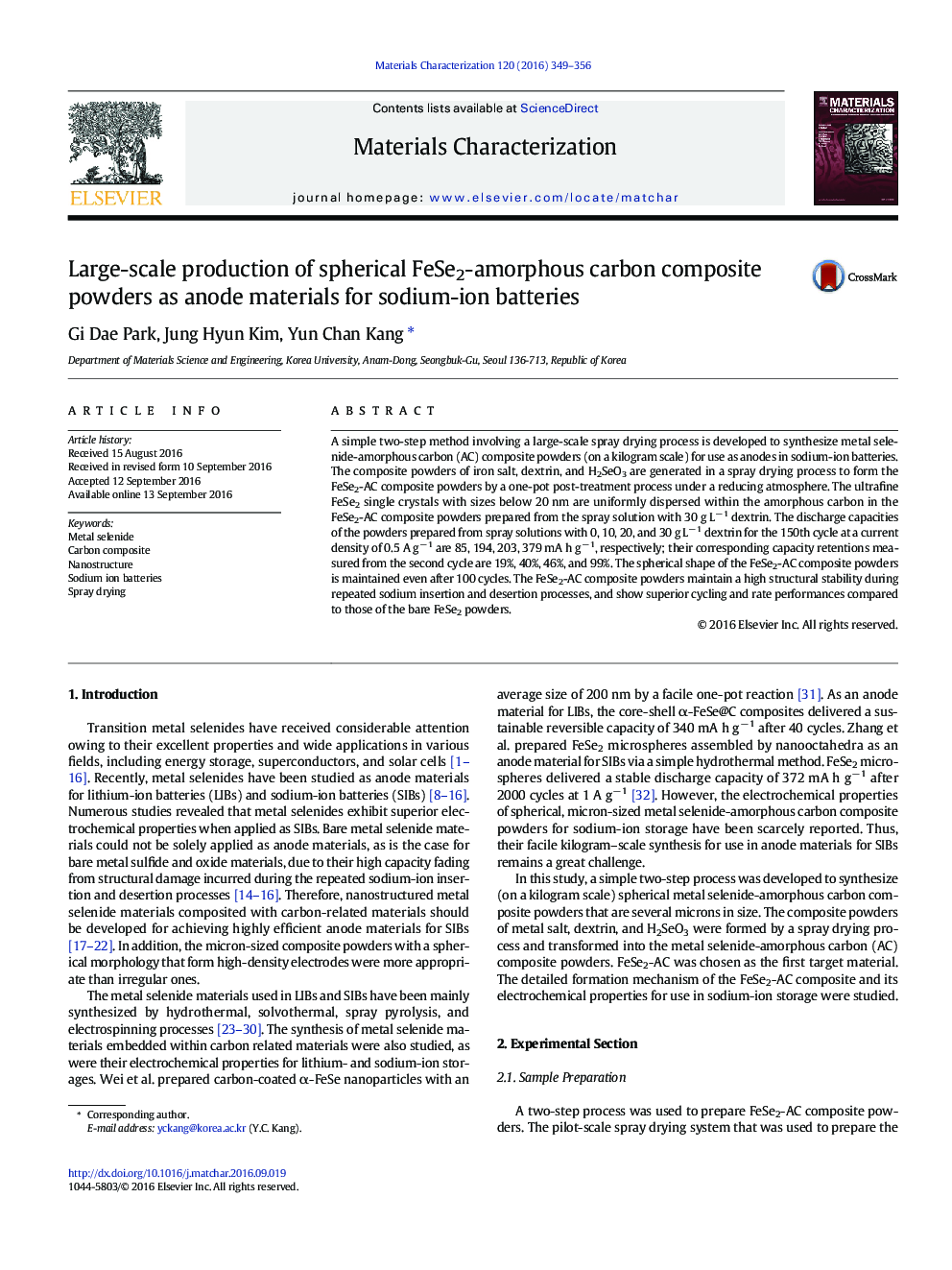| Article ID | Journal | Published Year | Pages | File Type |
|---|---|---|---|---|
| 7969707 | Materials Characterization | 2016 | 8 Pages |
Abstract
A simple two-step method involving a large-scale spray drying process is developed to synthesize metal selenide-amorphous carbon (AC) composite powders (on a kilogram scale) for use as anodes in sodium-ion batteries. The composite powders of iron salt, dextrin, and H2SeO3 are generated in a spray drying process to form the FeSe2-AC composite powders by a one-pot post-treatment process under a reducing atmosphere. The ultrafine FeSe2 single crystals with sizes below 20 nm are uniformly dispersed within the amorphous carbon in the FeSe2-AC composite powders prepared from the spray solution with 30 g Lâ 1 dextrin. The discharge capacities of the powders prepared from spray solutions with 0, 10, 20, and 30 g Lâ 1 dextrin for the 150th cycle at a current density of 0.5 A gâ 1 are 85, 194, 203, 379 mA h gâ 1, respectively; their corresponding capacity retentions measured from the second cycle are 19%, 40%, 46%, and 99%. The spherical shape of the FeSe2-AC composite powders is maintained even after 100 cycles. The FeSe2-AC composite powders maintain a high structural stability during repeated sodium insertion and desertion processes, and show superior cycling and rate performances compared to those of the bare FeSe2 powders.
Related Topics
Physical Sciences and Engineering
Materials Science
Materials Science (General)
Authors
Gi Dae Park, Jung Hyun Kim, Yun Chan Kang,
